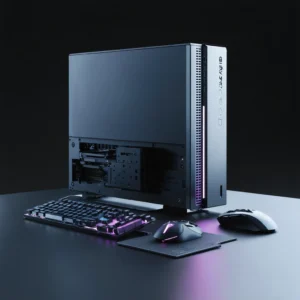
A New Chapter in Semiconductor Manufacturing
The renowned companies Intel and TSMC reach a historic agreement to form a joint venture that will operate Intel’s U.S. fabs. In doing so, they merge deep-rooted expertise with state‐of‐the‐art manufacturing, and they set a promising course for the future of American chipmaking. Moreover, the deal emboldens both market rivals and regulators to expect accelerated innovation and revitalized domestic production.
Strategic Vision and Operational Excellence
Intel pursues a bold strategy by reimagining its production processes, while TSMC brings an unrivaled level of technical precision. Consequently, this collaboration promises efficiency, rapid technology integration, and robust competitive advantages. Furthermore, both companies commit to investing in research and workforce development, and they invest heavily in modern equipment to secure a leading edge in a challenging global market. Transitional milestones include:
- Enhanced domestic manufacturing capabilities that strengthen national security;
- Strategic alignment ensuring resource sharing and cost efficiency;
- Accelerated research and development to maintain industry leadership.
These steps provide the foundation for a dynamic future in chip production.
Economic Impact and Industry Implications
This joint venture not only alters the corporate strategies of two major players but also reshapes the global semiconductor landscape. Firstly, the venture increases U.S. competitiveness. Secondly, it generates high-paying jobs and revitalizes domestic supply chains. Thirdly, the initiative drives innovations that boost productivity and sustainability. Notably, the collaboration attracts government incentives and boosts investor confidence, which benefits a broad spectrum of industries such as automotive, telecommunications, and consumer electronics.
Key Milestones and Future Directions
Intel and TSMC detail a comprehensive roadmap that includes several clear phases and timelines:
- Phase One: Immediate upgrades to existing facilities and integration of advanced manufacturing techniques.
- Phase Two: Expansion of production capacity accompanied by new training programs for the technical workforce.
- Phase Three: Continued research collaboration to develop next-generation chip technologies.
These stages exhibit ambitious targets and ensure transparent progress tracking for stakeholders. Additionally, both companies plan to organize regular strategy reviews and performance assessments.
Innovative Collaborations and Global Competitiveness
Intel and TSMC not only invest in the latest chipmaking technologies but also in creating a synergistic ecosystem that breaks down traditional boundaries. For example, they establish a bilateral framework that emphasizes mutual accountability and transparent communication. In an enlightening table below, one can view how the partnership compares with traditional models:
| Factor | Joint Venture Impact | Traditional Model |
|---|---|---|
| Investment Level | High, with strategic risk sharing | Single company burden |
| Innovation Speed | Accelerated through joint R&D | Slower adaptation cycles |
| Market Penetration | Enhanced global competitiveness | Limited by individual scale |
Additionally, the partnership sets an example for other companies needing collaborative solutions in the face of supply chain disruptions and global competition.
Driving the Future of Semiconductors
The agreement marks the beginning of a transformative journey. In parallel with aggressive strategic investments, the companies empower local communities and foster an environment of technical excellence. They ensure that research initiatives and workforce training programs align with rapidly evolving technology demands. Interestingly, this venture responds directly to intensifying global competition while paving the way for next-generation production techniques. Equally important, constructive collaboration underscores a profound shift towards resilient, localized supply chains. Moreover, the partnership reiterates trust between the companies and the government, thereby boosting economic stability and inspiring further investments in the tech industry.
Challenges and Opportunities Ahead
Although challenges arise, such as maintaining efficiency and managing cultural differences, both companies address these obstacles with forward-thinking solutions. To tackle potential issues, they implement the following measures:
- Regular executive summits that refine strategic objectives;
- Cross-functional task forces to enhance communication;
- Technology sharing protocols that streamline innovations.
Consequently, the joint venture transforms challenges into opportunities for enhanced market resilience and groundbreaking technologies. Additionally, the partnership expects to inspire many similar alliances, and it indicates the possibility of a fully integrated domestic semiconductor industry.
In summary, Intel and TSMC boldly rewrite the rules of semiconductor manufacturing by merging expertise that creates extraordinary opportunities. They deliver consumer benefits, encourage innovation, and ensure economic empowerment. As the industry embarks on a new era, stakeholders appreciate the transparent framework and adaptability featured in this ambitious venture. Ultimately, the collaboration sets a new benchmark as it drives progress and competitiveness through a combination of vision, resource sharing, and relentless determination.







